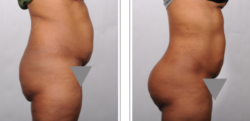Contents
- 1 Body Fat Transfer in Detroit
- 1.1 What to Expect
- 1.2 Areas to improve by Fat Grafting
- 1.3 What Are the Benefits & Risks
- 1.4 Will fat transfer help for the aging pace?
- 1.5 Can your body reject fat transfer?
- 1.6 Is fat grafting permanent?
- 1.7 What is fat transfer?
- 1.8 Where can I receive fat grafts?
- 1.9 Do fat transfers leave scars?
- 1.10 What is the goal of fat transfer?
- 1.11 What is the best place to remove fat from the body for the grafting procedure?
- 1.12 Is swelling and bruising severe after fat grafting?
- 1.13 What happens if you gain weight after fat transfer?
- 1.14 What should I do before fat transfer?
Body Fat Transfer in Detroit
Fat transfer used to enhance and sculpt the body is a great way to slim down one area of your body and enhance the other. During a body fat transfer, fat is removed via liposuction from a donor area and processed. Once the fat is processed, it will be injected into an area that the patient would like to shape or enhance.
What to Expect
- Anesthesia – Fat transfer performed on the body is usually done using local anesthesia with IV sedation.
- In/Outpatient – We generally perform fat transfer as an out-patient procedure in our accredited on-site surgery center.
- Recovery – The size of the treatment area will affect the length of time it will take to recover. On average, patients usually need 1 week for a large fat transfer.

Click here for more Fat Transfer before and after images
Areas to improve by Fat Grafting
Dr. William Sabbagh, is the ultimate professional. I have trusted him on several occasions and I have never been disappointed. I will and have referred him to many friends and relatives. I would never consider another doctor for plastic surgery. He is simply the best.
R.T.
What Are the Benefits & Risks
There are two main benefits to the use of fat transfer to the body. The first is the reallocation of fat on the body. This allows the patient to slim down areas such as the flanks or tummy and adds that fat to the buttock. The second benefit is that fat transfer is a safe and longer-lasting alternative to synthetic fillers. No surgical procedure is risk-free, and that includes cosmetic surgery like fat transfer surgery. During your consultation with Dr. Sabbagh or Female Plastic Surgeon Dr. Baca, he will review the risks so you can make an educated decision. With an established track record of over 80 years, an accredited facility, and thousands of satisfied patients throughout Dearborn, metro Detroit, Michigan and the U.S., the Straith Clinic has earned an excellent reputation for cosmetic surgery of the face and body.
Call us today at 248-270-5272 or send us an email to schedule a consultation during which you can discuss our facial and body services and tour our facility, including our on-site operating facility.

